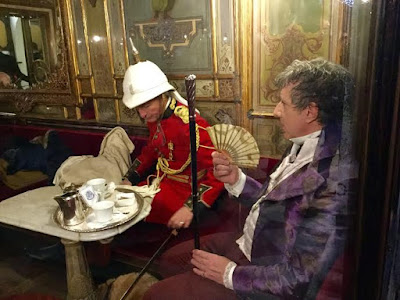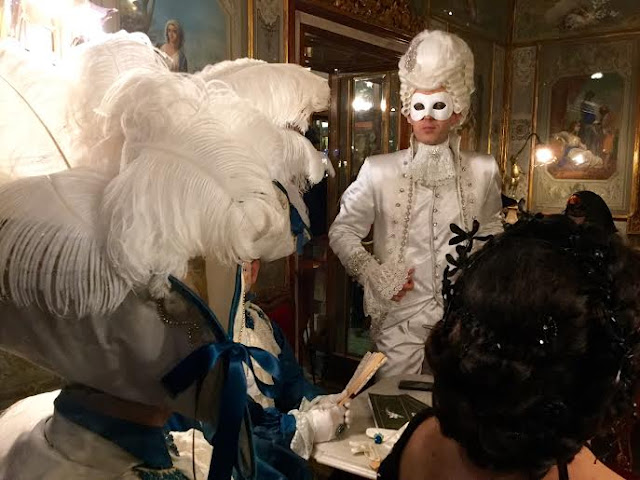 |
| Emilio Ceccato - Gondolier Headquarters at the Rialto Bridge |
Thanks to Emilio Ceccato, a Venetian clothing brand that has been around since 1902, the gondoliers of Venice now have their own official line of clothing -- which you can buy, too. A percentage of all the proceeds is invested in supporting the ancient gondolier tradition, ensuring that one of Venice's most-beloved symbols remains alive and well.
Although Venice's gondoliers have been around for more than 1,000 years, they never before had their own official line of clothing. Now, each gondolier will receive one full uniform each year for free from Emilio Ceccato.
The logo incorporates the symbols of Venice in one unique design: the winged Lion of San Marco holds an open book, which symbolizes peace. On either side is the ferro, the metal design found on the prow of the gondola that represents the six different sestieri, or districts, of Venice. .
On Thursday, February 25, the Emilio Ceccato Group presented the Gondoliers Association, which represents Venice's 433 gondoliers, with a check for €1,500, a deposit towards the first project they are undertaking together -- they will build two new "Gondolone" to transport people across the Grand Canal. Not only will the Comune of Venice get a couple of much-needed boats, it will also provide work for the squero, the shipyard where one gondola is already under construction.
 |
| Traghetto at the Rialto Vegetable Market |
Even the Americans are showing their support. This is from Kathleen Kennedy Townsend:
 |
| Kathleen Kennedy Townsend on Emilio Ceccato Facebook page |
 |
| Gondola Greg at Emilio Ceccato on Facebook |
Ciao Alberto!
As President of the Gondola Society of America,
and host of the 2015 US Gondola Nationals,
I support the Associazione Gondolieri of Venezia.
In addition, I presented an Associazione Gondolieri patch to the owner or representative of each of the twelve gondola companies participating.
Thank you for producing high quality clothing for gondoliers – all my staff in Newport Beach and Texas wear Emilio Ceccato striped shirts.
Saluti from California,
Greg Mohr
 |
| EmilioCeccato.com |
If you can't make it to Venice, you can always shop online at Emilio Ceccato. Not only will you have your own unique piece of Venice, you will be helping to keep one of Venice's oldest traditions alive.
Ciao from Venezia,
Cat
Venetian Cat - The Venice Blog






















